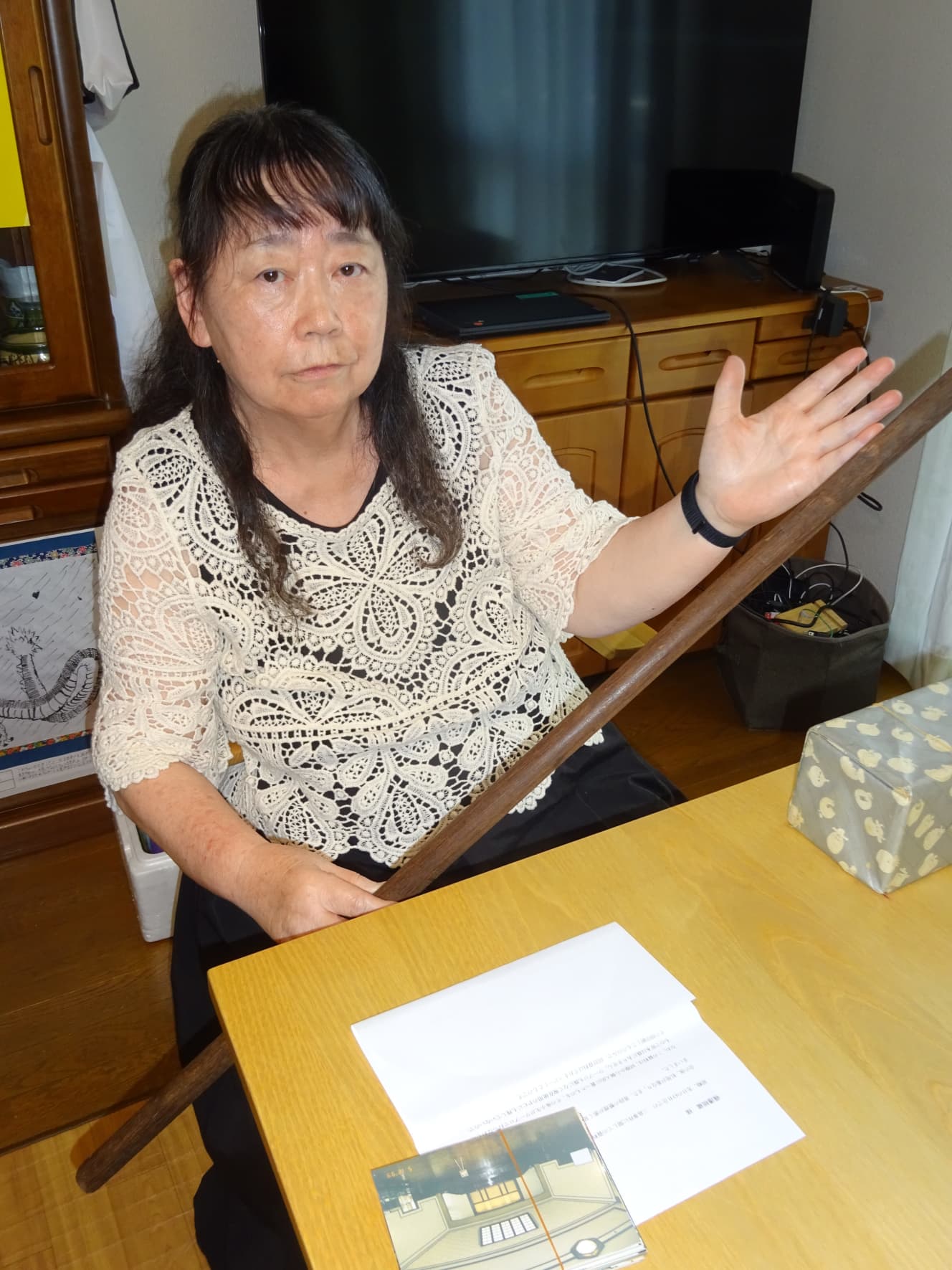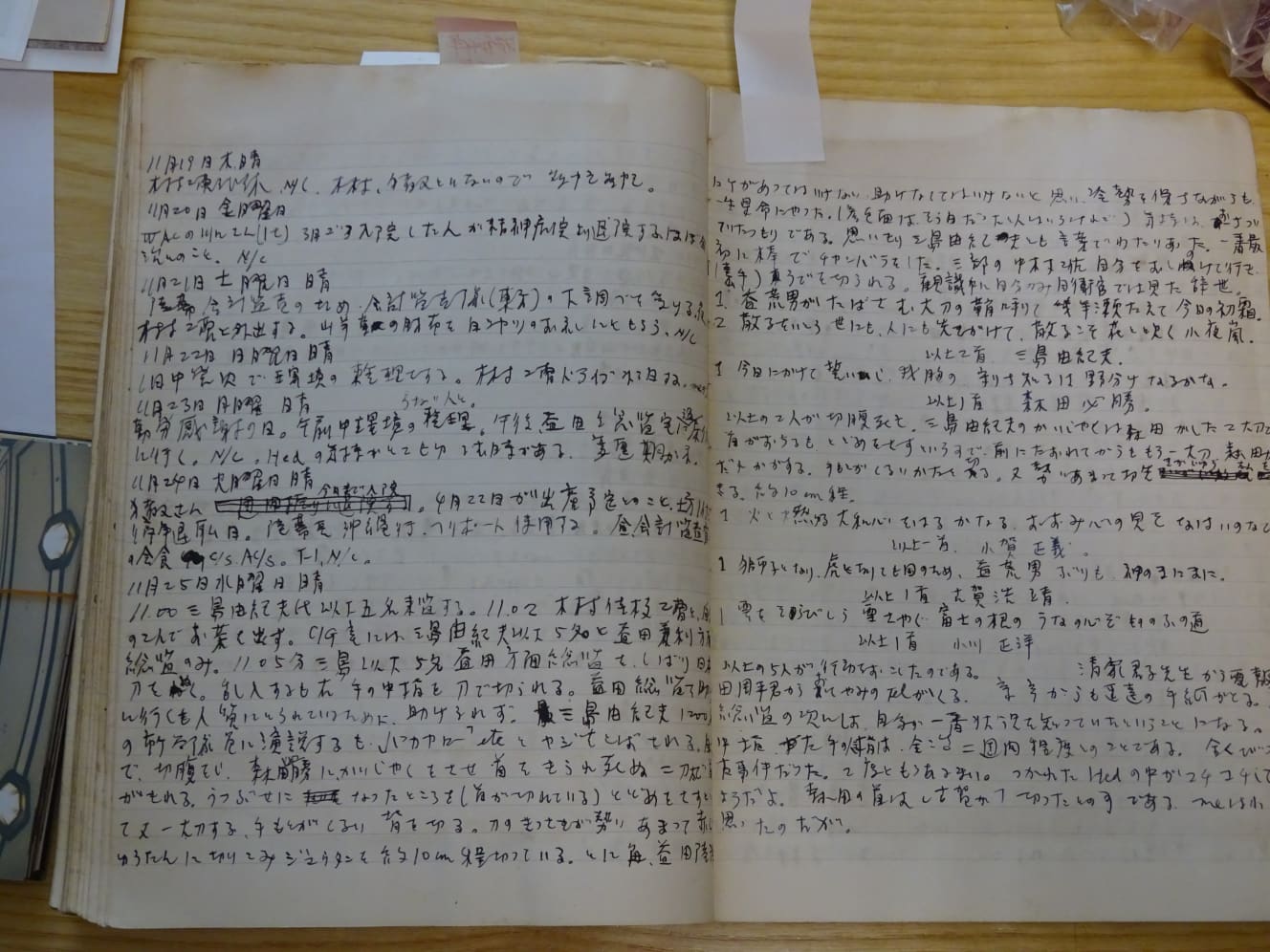Unveiling Day-of Diaries and Records of Yukio Mishima 54 Years After Death
Even over 50 years after his death, the author Yukio Mishima (who died at the age of 45) continues to influence many people.His suicide by ritual suicide at the Ichigaya Camp of the Self-Defense Forces is well known, but there are still many unknown facts about his death. Alongside the vivid scene items splattered with blood, the families of the troops who witnessed the whole event have agreed to interviews with FRIDAY Digital.

“General Masuda attempted to stand Mr. Mishima’s and Mr. Morita’s severed heads. Mr. Morita’s head stood up, but Mr. Mishima’s head fell forward. The General asked for a newspaper and placed it under Mr. Mishima’s head to straighten it up. Then everyone present joined their hands in prayer. This is what I heard from my husband.”
Although it happened 54 years ago, many people are likely familiar with the Mishima Incident. On November 25, 1970, Yukio Mishima, a Nobel Prize nominee and one of Japan’s leading writers, took Superintendent Mashita Kanetoshi, then 57, of the Ground Self-Defense Force’s Eastern Area Unit, hostage, calling for a coup d’état against the Self-Defense Force members. Mishima delivered a speech to the Self-Defense Force officers gathered below the balcony, urging them to rise up, then returned to the commissioner’s office and committed seppuku with his comrade, Hisshatsu Morita (then 25).
The ones who witnessed the seppuku of Mishima and Morita were said to be three members of the organization “Shield Society” formed by Mishima and General Masuda, totaling four, but in reality, there was a Self-Defense Force member who witnessed the scene of seppuku in the General’s office. It was Junzo Isobe (85 years old at the time, 31 years old at the time), a sergeant second class who was in charge of the General’s miscellaneous duties in the “office” at that time.
Currently, he is spending his time in a nursing home due to a cerebral infarction. Before collapsing, he was organizing his documents, saying that fewer and fewer people know about the Mishima Incident. So he must entrust the documents he has to future generations. Just then, he was struck by illness. In order to realize her husband’s wishes, Machiko, his wife, shared the stories and documents she heard from Isoe. The story at the beginning was something Machiko had heard from her husband dozens of times in the past, and it is an anecdote that reflects General Masuda’s respect for Mishima.

Mr. Isobe recorded his daily work events in a diary, and this is what he wrote about the day of the incident.
—–
11:00 Yukio Mishima and five others arrived at the superintendent’s office.
11:02 Corporal Yoshie Kimura and I served tea for two people. In the superintendent’s office, there were Yukio Mishima and five others, along with Superintendent Kanetoshi Masuda.
11:05 Yukio Mishima and the others tied up Superintendent Masuda and drew a Japanese sword. When I tried to intervene, my right middle finger was cut by the sword. I attempted to help Superintendent Masuda, but I couldn’t because I was being held hostage.
—–
Though written in an extremely matter-of-fact manner, in reality, the Self-Defense Force members were risking their lives to confront Mishima and his group in an attempt to rescue the superintendent. Detailed information about Isobe’s actions can be found in the Self-Defense Force’s internal document “Katsumohan.”
“At the time, the office did not have firearms. Corporal Isobe, feeling that the superintendent was in danger, entered the superintendent’s office with a nearby mop handle. Corporal Isoe thrust the mop handle towards Mishima’s face, but Mishima swiftly swung his sword, cleanly cutting off the mop handle. Unable to do anything, he left the room in frustration. Corporal Isoe then entered the superintendent’s office again, this time with a portable fire extinguisher, and sprayed Mishima and his group.”
The troops broke the window to enter the room, causing glass shards to scatter. In the melee, books from the superintendent’s office shelves fell, the reception desk and chairs were overturned. Eventually, Isobe and the other Self-Defense Force members were pushed out of the room by Mishima’s group, but this only lasted for about 2-3 minutes.
And Mishima, as a condition for releasing the superintendent, demanded that the Self-Defense Force should gather the Self-Defense Force members in front of the main building and listen attentively to his speech. Mishima addressed the assembled troops in front of the main building, delivering his final speech from the balcony above the entrance. However, his plea was drowned out by the troops’ shouts and the noise of the media helicopters, and few of the troops were able to hear the contents of the speech. Mishima concluded his speech after about 10 minutes and returned to the superintendent’s office, where he then committed seppuku.
“My husband sat about 3 meters away from Mishima, watching the seppuku proceed calmly in disbelief. He said that he felt like he didn’t know what was happening.” (Machiko)
Despite the carpet in the superintendent’s office being red, the area around Mishima and Morita’s corpses turned into a sea of blood, staining it a deep crimson. As time passed, the vivid red turned into a dark, almost blackish red. Mishima’s neck, which required multiple attempts at decapitation, did not stand upright due to the uneven cut, so Superintendent Masuda placed a newspaper underneath to prop it up.
“Superintendent Masuda was a person of sincere and uncompromising bushido spirit, and my husband greatly respected him. It’s because of his character that he could understand Mishima’s feelings so deeply and chose to witness the seppuku without stopping it.” (Machiko)
It’s been said that at that moment, Superintendent Masuda, still bound, shouted to stop it and to not give the finishing blow but in reality, he was likely acting as a witness. The month following the incident, Superintendent Masuda took responsibility and resigned from his position. He later found employment at Haneda Airport office but passed away due to illness in July 1973.
The Mishima Incident will continue to be passed down through generations, and its evaluation may change with time. However, the spirits of Mishima and Superintendent Masuda will surely remain eternal.
In the paid version of “FRIDAY GOLD,” Machiko provides even more detailed testimony about “Mishima’s final moments” and releases numerous on-site documents in full.
In the paid version of “FRIDAY GOLD,” Machiko’s more detailed testimony of “Mishima’s last days” and numerous on-site documents are available in full text.
PHOTO: Courtesy of Machiko Isobe